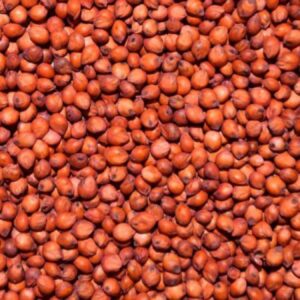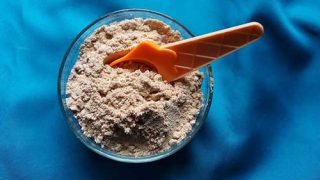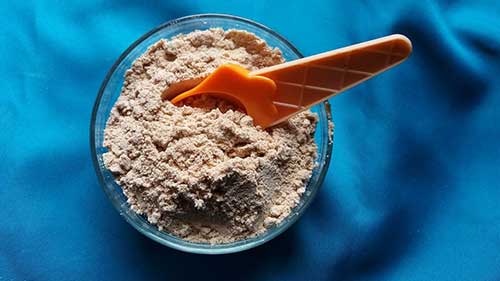As a mum, making that choice of baby food for your baby after 6 months of exclusive breastfeeding could be a difficult one.
Some babies will not eat the regular baby food and that becomes a problem for the mother. While this presents a problem, it is a good one because it now gives you an opportunity to go natural with the baby.
For different reasons, we encourage women to feed their babies more of baby food made from whole grain.
They are natural and bring in so much nutrients that a baby needs to develop appropriately.
One other reason we recommend whole grain food is the increase in cases of obesity in children.
A study found that formula supplementation by 6 months was associated with higher BMIzs, whereas supplementation with solid foods was not (1).
To prepare whole grain baby food for your baby you will need to start with a small amount.
Most times, knowing what a baby will love is not easy. This is why we recommend you try different grains or a combination of several grains.
In fact, no baby loves any particular food the very first time you introduce that food. It is often in consistent introduction of the food that the child begins to love it.
Note: The fact that a baby refuses to eat a particular food the first, second or third time you introduce it does not mean the baby does not like it.
For our baby formula which we have also introduced to some mums, here are the grains you will need.
1. Roasted Groundnuts
Adding groundnuts to a baby’s food will bring in protein, carbohydrates, and fat. It also contains Omega-6 which helps in reducing the risk of heart disease, lowering total cholesterol levels, lowering bad cholesterol levels.
Furthermore, adding roasted groundnut to the mix, gives the food a nice aroma.
Groundnuts are also a good source of different vitamins and minerals that would aid a baby’s development.
It contains vitamin B1, B3, B9 and E. Groundnut also contains manganese, phosphorus, folate, magnesium, copper among others.
2. Soybeans
This is another protein-rich grain that helps keep a child healthy.
It is low in saturated fat, cholesterol free, lactose free and a good source of omega-3 fatty acids.
Soybeans are also a rich source of antioxidants and it is high in phytoestrogens that helps boost your baby’s heart health.
3. Wheat (Optional)
Whole grain wheat is a good one to add to a baby food, but we often suggest that mums could leave it out.
This is because of the gluten in the grain that could be delicate for a baby who has gluten intolerance.
Truly, you may not know if your baby reacts to this compound.
Gluten is a form of protein that could cause issues for a baby.
Over time, the immune reaction to eating gluten creates inflammation that damages the small intestine’s lining.
It does not only prevent absorption of some nutrients, but could lead to medical complications.
As a result, you may leave out wheat in your combination until you are sure your child can take it without trouble.
4. Red Sorghum
There are different types of sorghum and the colour is what makes the difference.
Basically, we have seen white sorghum, red sorghum and another that is off-red.

We recommend you use red sorghum.
It is a whole grain food that you can add to your natural baby food. Red sorghum is rich in antioxidants.
The phenolic compounds, many of which act as antioxidants reduces some forms of inflammation.
This is due to its antioxidant properties. Several of the phenolic compounds in sorghum have been linked to anti-cancer effects.
5. Red Rice
This is another grain to add to your baby food. It is rich in antioxidants and a good food that helps in brain development.

A 2017 study says after an evaluation of the species of rice, red rice proved to be superior to white rice in all parameters barring seed length (2).
“Red rice was found to have a higher iron, magnesium, calcium, and zinc content than white rice.”
This is one of the reasons health organisations recommend that you feed your baby whole grains.
Regarding other nutrients the study revealed that red rice has a higher crude protein (10.49%) and crude fiber (2.71%) content as compared to white rice.
The nutritional quality of red rice was found to be comparable to many millets, fruits and vegetables.
If you would love to get red rice, check our shop.
This healthy rice is good for brain development, contains antioxidants to counteract free radicals and contains Vitamin B6.
Other health benefits of this rice could be found here.
How To Make Natural Baby Food At Home
Fortunately, you can serve your baby these whole grains separately, but we also recommend you make a mixture.
Combining them in a meal gives the baby different nutrients at once.
To prepare this combination, buy ‘Derica’ cup measurement of each of the rains except groundnut.
Two milk cups of groundnut will be okay for the mixture.

Wash the grains and sun-dry. After they are dry, you will roast then in an oven. This way the grains are cooked and ready for consumption.
Ensure that they do not burn.
After roasting all the grains, including the groundnut (ensure you remove the peel of the groundnut), take them to a mill and grind them.
It is important that you monitor how clean the millers handle the rain because it is baby food. Contamination could pose a serious problem.
Basically, you can grind them separately or together. Depending on how you want to try it for your baby.
Most importantly, ensure that the grains are really in powder form before you tell the miller to stop. If it is rough, it will be difficult for your baby to eat it.
We recommend you grind separately. This way you can introduce the baby food to the baby separately.
This will enable you know if there is anyone that the baby does not really like. You can then do a mix, adding little of the one the baby does not really like.
Why Whole Grain baby Food Is Good
Studies have shown that giving babies whole grain foods contributes so much to their development.
A 2019 study of the data of National Health and Nutrition Examination Survey found that all infants consuming grain foods had greater energy (kcal) vs. grain non-consumers.
“While infant grain consumers 6- to 12-months-old had higher daily intakes of sodium and added and total sugars, these infants also had significantly higher dietary fiber, calcium, folate, potassium, magnesium, zinc, phosphorus, choline, thiamin, riboflavin, and vitamin B6 compared to non-consumers.
In 13- to 23-month-olds, grain consumption was associated with greater daily dietary fiber, iron, zinc, magnesium, phosphorus, folate, riboflavin, niacin, thiamin, vitamin A, vitamin B6, and vitamin B12 relative to non-consumers (3).
Indeed, if you want your baby to be healthy and also develop well, a whole grain baby food is our recommendation.
If you find this helpful, kindly share with every mum you know to enable them know best baby meal combination for their babies.
WATCH: LOW CARBOHYDRATE MEAL ADULTS CAN TRY TO MAINTAIN HEALTHY WEIGHT



